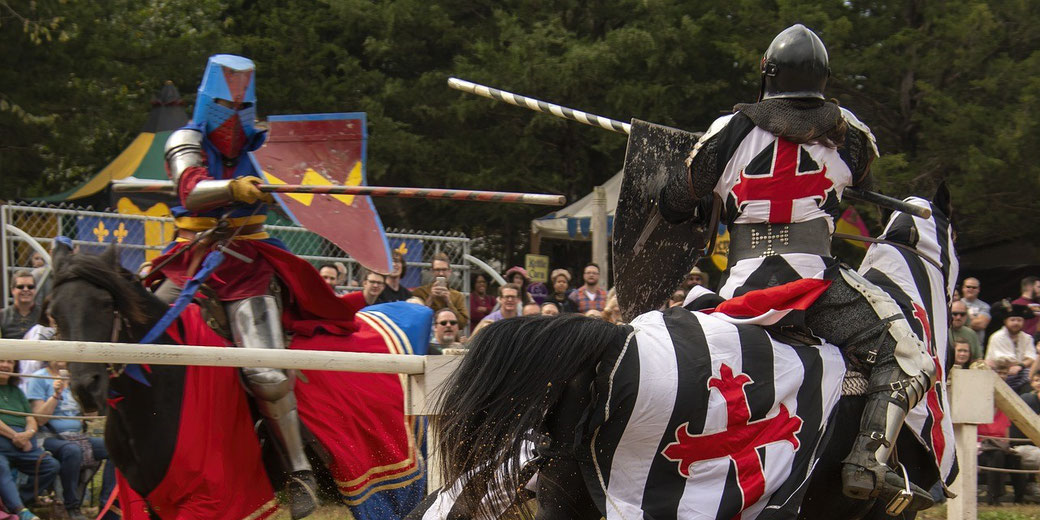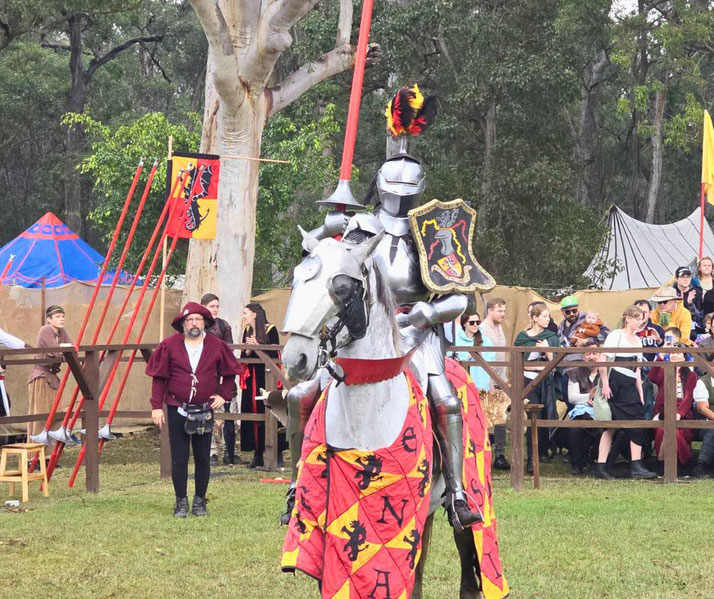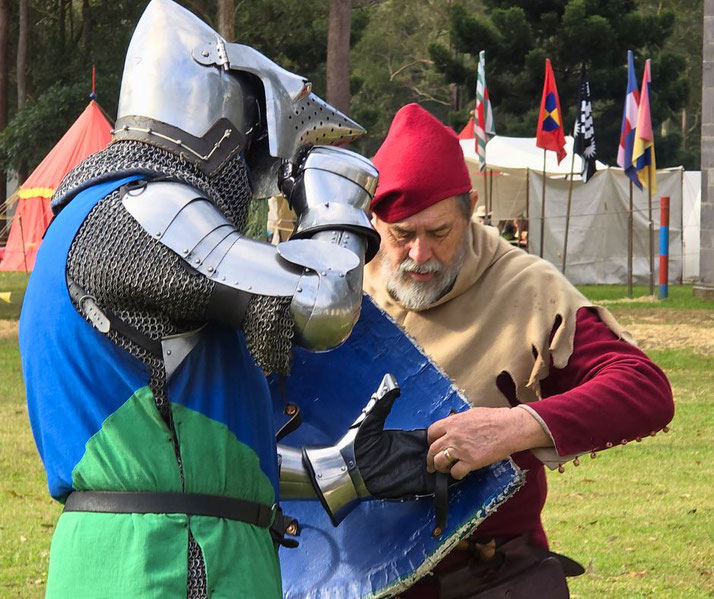Why jousting was the blockbuster (and bloody) sport of the Middle Ages

Step back in time and imagine yourself in the bustling atmosphere of a medieval tournament, surrounded by cheering crowds and the clanging of armor.
In the center of the arena, two knights in full armor charge at each other on horseback, their lances lowered and aimed straight ahead.
This is jousting, the quintessential chivalric sport of the Middle Ages.
From the 12th century onwards, jousts were the ultimate test of a knight's courage, strength, and skill, and a way to gain fame and fortune in the eyes of their peers.
What was jousting?
Jousting was a popular sport and spectacle during the medieval period in Europe, which involved two knights riding towards each other on horseback, each wielding a long lance.
The objective of the joust was to strike the opponent with the lance in a specific target area, usually the shield or helmet, with enough force to knock the opponent off their horse.
Jousting was a popular sport and spectacle that began in the 11th century and lasted until the early 16th century.
The origins of jousting are unclear, but it is believed to have originated from military training exercises, where knights would practice charging at each other with lances.
The popularity of jousting reached its peak during the 14th and 15th centuries.
Many medieval rulers, such as King Henry VIII of England, were avid jousters, and tournaments were held regularly throughout Europe.

Why did knights joust?
Knights jousted for a variety of reasons, including as a way to display their martial prowess, as a form of entertainment and sport, and as a means of demonstrating their chivalric values.
Jousting was considered an essential part of a knight's training, as it allowed them to hone their riding and combat skills.
Knights also jousted to gain fame and glory, as successful jousting performances could bring wealth, prestige, and the admiration of others.
Additionally, knights often jousted in the name of a lady, dedicating their victories to her in the spirit of courtly love.
In some cases, jousting was used as a diplomatic tool, with knights from different countries participating in tournaments to build relationships and establish alliances.
Jousting tournaments were huge entertainment events
Tournaments, or tourneys, were a significant part of medieval culture and involved a variety of competitions and festivities.
These events were held to celebrate important occasions, such as weddings or religious holidays, and often lasted for several days.
Tournaments were attended by members of the nobility, as well as common people, and provided an opportunity for knights to demonstrate their skills and gain fame, wealth, and prestige.
Jousting was the main event of a tournament, but other events included the melee, which was a mock battle between two teams of knights fought on foot or on horseback, where the objective was to capture or disarm opponents.

The tournaments also featured archery contests, where archers competed to shoot arrows at targets, horsemanship competitions that involved displaying the skills of horsemanship, such as jumping, riding, and maneuvering, and wrestling contests, which were a display of strength and skill that involved grappling and wrestling opponents.
Foot combat was another combat sport that was similar to fencing and involved knights fighting with swords or other weapons on foot.
Falconry was also a sport that involved using trained birds of prey to hunt and capture prey.
Music and dance were also important components of tournaments, with festivities that included music, dancing, and other forms of entertainment.
The tournaments provided an opportunity for knights to demonstrate their chivalric values, such as bravery, honor, and loyalty, and to build relationships and establish alliances with other knights from different regions or countries.
How dangerous were jousts?
Jousting was a very dangerous sport and injuries, and even deaths, were not uncommon. The sport resulted in the knights colliding with each other at high speeds.
The knights wore armor and helmets to protect themselves, but even with this protection, injuries could be severe, including broken bones, concussions, and internal injuries.
In some cases, knights were killed during jousting tournaments. Despite the risks, jousting remained a popular sport for centuries, with knights willing to take on the dangers in the name of honor and glory.

Why did jousting fall out of favour?
Jousting began to lose popularity in the late medieval period primarily due to the increasing availability of firearms and the development of new military technologies, which made heavily-armored knights and their traditional weapons, such as lances, less effective in battle.
As a result, knights no longer had the same military significance, and jousting began to lose its practical purpose.
Also, hosting a tournament was an expensive affair, as it involved providing lodging, food, and entertainment for the participants, and required large open spaces for the events to take place.
This made it challenging for the nobility to justify the cost of organizing such events, and gradually, tournaments became less frequent and less elaborate.
Additionally, as the Renaissance period emerged, there was a shift towards more intellectual pursuits and artistic endeavors, which meant that less attention was given to chivalric values and martial pursuits like jousting.
The increasing importance of diplomacy and politics also led to a shift in focus from personal glory and honor to more practical and strategic considerations.
What do you need help with?
Download ready-to-use digital learning resources
Copyright © History Skills 2014-2025.
Contact via email
With the exception of links to external sites, some historical sources and extracts from specific publications, all content on this website is copyrighted by History Skills. This content may not be copied, republished or redistributed without written permission from the website creator. Please use the Contact page to obtain relevant permission.





